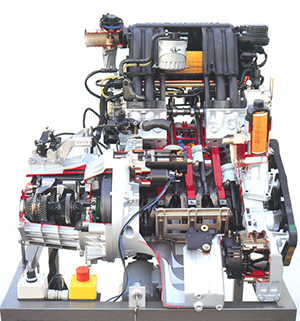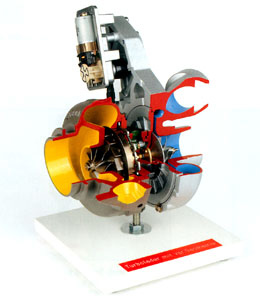-
Your shopping cart is empty!
WHY TURBOCHARGE AT BERRIMA DIESEL?

At Berrima Diesel, we pride ourselves on being Australia's ‘Number 1’ choice for turbo system installations on 4WDs
You are guaranteed a trouble free turbo fitting by Australia’s most experienced turbo fitter because we install more turbo chargers than any other workshops in Australia.
All our Turbo Systems are manufactured by DTS to our exacting standards. DTS is by far Australia’s largest ‘turbo specific’ company and we are their ‘Premier Installer’.
Diesel 4WDs and appropriate turbocharging are the perfect combination. The high torque output, at low r.p.m. results in truly magnificent off-road performance or towing vehicles.
- We have been successfully turbocharging 4WD diesels for many years now.
- Andrew installs all the turbo systems personally so you are guaranteed total quality in fitting and reliability.
- Turbocharging is not another cheap accessory like a bull bar. It is a precision piece of equipment and should be fitted and setup by a specialist.
- Our turbo systems utilize water-cooling, just like all factory turbo-charged 4WD vehicles do today!
- MTQ WARRANTY
BERRIMA DIESEL 4WD TURBO SYSTEM

Below is a list of inclusions in every BERRIMA DIESEL 4WD Turbo System:
- Water -cooled and waste-gate controlled Mitsubishi Turbo unit.
- Cast iron ‘split pulse’ (model dependant) exhaust manifold.
- ‘High Flow’ Cast Alloy Powder coated air ducting.
- Stainless steel braided oil and water lines.
- Stainless clamps and clips. Stainless or Anodized nuts and bolts.
- Standard air filter box or Cast alloy air cleaner box (model dependant)
- Exhaust ‘Isolation Bellows’ and connection.
Our turbo systems are designed to retain as many standard components as possible. Unlike other systems, our Turbo Systems are designed to fit in with your other accessories. Our Turbo Systems are ‘Stand Alone’ meaning that you don’t get told later that you need a larger exhaust or a fuel pump aneroid to make it ‘go’ properly. They perform without other expensive modifications-standard out of the box.
SOME TURBOCHARGE EXAMPLES:
Vehicle Models Before Turbo After Turbo NISSAN Patrol GQ 4.2 86 KW 265 NM 122 KW 362 NM TOYOTA Landcruiser 78 1HZ 96 KW 285 NM 136 KW 368 NM NISSAN Patrol GU 4.2 86 KW 264 NM 122 KW 362 NM TOYOTA Landcruiser 80 1HZ 95 KW 260 NM 136 KW 375 NM NISSAN Navara 2.7 57 KW 175 NM 80 KW 252 NM TOYOTA Landcruiser 100 1HZ 96 KW 285 NM 138 KW 386 NM NISSAN Navara 3.2 76 KW 220 NM 105 KW 307 NM TOYOTA Hilux 2.8 60 KW 138 NM 83 KW 265 NM TOYOTA Landcruiser 60 2H 75 KW 235 NM 110 KW 340 NM TOYOTA Hilux 3.0 65 KW 197 NM 91 KW 278 NM TOYOTA Landcruiser 75 2H 75 KW 235 NM 110 KW 340 NM Mazda Bravo/ Ford Courier 64 KW 174 NM 98 KW 280 NM TOYOTA Landcruiser 75 1HZ 95 KW 260 NM 136 KW 375 NM Mitsubishi Triton 2.8 62 KW 176 NM 98 KW 282 NM
EXPOSING THE MYTHS ON FUEL PUMP COMPENSATORS (ANEROID) ADDED TO AFTERMARKET TURBO SYSTEMS
There is quite a debate raging about Diesel Fuel Pump Modifications as people strive for more power than is standard from their After Market Turbo Charged 4WD! This topic is driven by misinformation from diesel pump shops promising a large increase in power in addition to the gain obtained from the turbo! I have put our views below in point form.
- An aneroid is a $1000 to $1800 addition to the existing injection pump. It is solely classified by the component manufacturer as a “Pollution Control Device” fitted to factory turbo diesels.
- Contrary to this it is promoted by some diesel workshops as a performance device for aftermarket turbo installations! What people don’t understand is that the same heavy fuel loadings obtainable with an Aneroid installed to a diesel injection pump can also be obtained easily at no extra cost without it.
- A correctly set up diesel injection system in conjunction with an aftermarket turbo installation will perform nearly as well as the equivalent factory turbo vehicle. This is the way the aftermarket turbo system has been developed and it should stay that way. The Turbo System should perform “Stand Alone” with no additions like large exhausts and fuel pump modifications.
- An Aneroid fitted to the injection pump of an aftermarket turbo diesel makes it “magically” outperform a factory turbo equivalent. The reason for this is obvious – “Over fuelling above the recommended levels “UNSAFELY”! Over fuelling outside the aftermarket turbo system manufacturers specs may mean more power but this is unsafe for the engine.
- The addition of an Aneroid to a fuel pump is not accepted by most aftermarket turbo manufacturers as it promotes over fuelling which in turn can create a huge reliability cloud over their product.
- All aftermarket turbo system warranties become void if a pump is modified outside the said aftermarket manufactures specs! Just remember this if you have New Vehicle Warranty being covered by the aftermarket turbo manufacturer like DTS does. You will lose your coverage.
- The usual argument by the pump shop trying to sell an Aneroid as an addition to a turbo installation is that the engine will run smoother and produce better efficiency. In fact it has no relation to smoothness and the efficiency phrase is a catch.
- Our biggest concern is, “What specification is the Aneroid set to?” Again the usual story given to a potential customer by the diesel pump shop is that it is set to factory fuel specs. For starters there are NO factory fuel specs for aftermarket turbo installations supplied by either original vehicle manufacturer or the aftermarket turbo manufacturer.
- Secondly the fuel spec that the diesel pump shop usually is talking about is the genuine factory turbo specs for fuel loadings. This is a real worry as the factory turbo is usually a completely combustion system with much more durable pistons to cope with heavy fuel loadings. To set up an aftermarket turbo to match these fuel loadings would lead to an obvious eventual outcome… A damaged engine! Unfortunately this damage is not short term. It happens over time and usually rears its ugly head eventually.
- The only Specifications supplied by Turbo System manufacturers are Boost Pressure, Air/Fuel ratios and Exhaust Temperatures (No engine output figures are ever supplied)! These were obviously not developed with a Fuel Pump Aneroid and so could not accurately be used with one!
- At the end of the day it is a fact that if the fuel loadings are kept within the aftermarket turbo manufacturers specifications via Boost and Exhaust readings you will not only keep your warranty (which will most likely become Void if an Aneroid is fitted) you will have your diesel engine for the long term!!
- This leads to the next common area of misinformation: Dyno Tuning.
- A Dyno is a device used for measuring power output at the wheels.
- A Dyno is only as good as the operator. Dyno’s are a technical piece of equipment and require skill and experience to use correctly. Even with skill and experience the results only give you an accurate measure or comparison on the day. Various factors such as air temperature, calibration of the dyno, etc will have a large effect of the final data so ultimately the results are up to the honesty of the operator.
- Berrima Diesel has found that “on road” driving experience with test gear (air/ fuel ratio meter – boost gauge) attached to the 4WD is the preferred way to obtain a true indication of “real – time” operating conditions. An example of this is looking at factory development of vehicles and race vehicle testing. At the end of the day, it is kilometer (km) after kilometer (km) of road testing that seals the job! If road conditions don’t allow for road testing then a dyno with a good operator, is a good second choice.
- Of concern is the “smudging” of dyno figures. Dyno figures can be smudged to give false impression of gains. This is noted in the number of 4WD diesels we have seen through our workshop with impressive dyno figures but “lack luster” performance in the real world. It is even addressed by Dyno manufacturers.
- Again…. No 4WD manufacturer or aftermarket turbo manufacturer supplies rear wheel dyno figures to set things to. So question the workshop if they say they are setting the power output to a given figure. It might be well intentioned to set up a 4WD based rear wheel output but identical 4WD diesel engines are slightly different from one to the next and even atmospheric conditions play a varying factor.